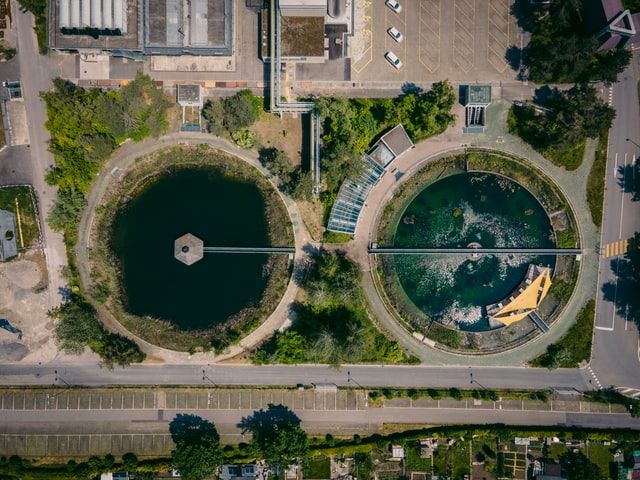
How Data from Wastewater Is Being Used to Spot a Rise in Local COVID Infections
When Winston Churchill uttered the now-enshrined political aphorism “never let a good crisis go to waste,” he most likely was not talking about sewage. However, decades later, the SARS-CoV-2 virus has taken the world by storm. Letting the crisis go to waste—e.g., monitoring the virus’s presence in the wastewater—has proven to be a powerful ally in predicting rises in COVID-19 cases in local communities and painting a picture of how infection trends have been moving across the United States.
Here’s what you need to know about the process of wastewater monitoring, how it can be an important method of measuring COVID-19 cases, and how the technology may be embraced in the future.
What Is Wastewater Data Collection?
Wastewater data collection—which has been systematized via the National Wastewater Surveillance System (NWSS)—is a new public health tool. The NWSS was launched in September 2020 by the U.S. Centers for Disease Control and Prevention (CDC) as a way to augment the country’s ability to track the SARS-CoV-2 virus around the country. Put simply, many people who are infected with COVID-19 will shed the SARS-CoV-2 virus in their feces, which will then travel into a community’s wastewater collection system where it can be intercepted by intrepid scientists.
Outside of infants who use diapers, toddlers still in potty training, and the 20 percent of U.S. households who aren’t serviced by a municipal wastewater collection system, wastewater surveillance can be a powerful way of sampling the population and tracing the local burden of disease. The pandemic has been marked by data collection problems—such as testing kit shortages, difficulties accessing healthcare, and even the mere fact that home tests do not get reported.
However, public health officials can use the steady and reliable metric of below-ground gastrointestinal output to circumvent any hiccups that occur above the ground.
How Is Wastewater Data Collection Done?
You may be morbidly curious about the process involved in wastewater data collection—or you may think it is best left up to the imagination (in the latter case, you may want to skip this section). According to the CDC, “wastewater” is a term that encompasses all types of water from a home that eventually travels into the sewage system—from sink water, to shower water, to toilet water.
During the COVID-19 monitoring process, wastewater is collected from a sewer system as it travels to a water treatment plant. These samples are then sent to a public health lab or environmental lab to be tested for the presence of the RNA material shed by the SARS-CoV-2 virus. Then, these labs send their data to the CDC through a designated online portal, and a specialized software analyzes the data and reports the data back to the local health departments to help guide their local efforts. The analyses are also made available through the CDC’s COVID data tracker.
The Value of Wastewater Data Collection for COVID-19 Monitoring
One of the most frustrating elements of the SARS-CoV-2 virus from the standpoint of controlling the spread of the virus—and monitoring its presence within a community—has been that it is quite possible to have an asymptomatic infection. Unless a person is being subjected to routine screening, an asymptomatic infection cannot be detected by traditional methods—however, the infection can be measured through wastewater detection.
According to the CDC, wastewater monitoring can serve as a “canary in the coal mine” of sorts, functioning as an early indicator that case numbers may be increasing in a community, and even outperforming clinical tests when it comes to detecting new variants.
The Future of Wastewater Data Collection
The value of wastewater monitoring in the COVID-19 pandemic has been undeniable, and it has progressed tremendously over the past two years as more communities have developed the infrastructure to participate. Recent reporting notes that the CDC plans to add 500 new testing sites in the coming months, with more potentially in the future.
Because the system has now been established, it’s possible that other viruses, or community biometric health indicators, could be monitored in the future. This kind of technology may be here to stay.
How to Learn More About Wastewater Monitoring
Wastewater monitoring can accurately portray the upward or downward trend of infections within a community, and—especially at a time when most new COVID-19 cases are not reported—it can be an effective and evergreen tool.
To learn more about wastewater monitoring, check out the CDC’s NWSS website.
Research and materials for this article were compiled, written, and distributed on behalf of the National Public Health Information Coalition. The views and opinions expressed in this blog are those of the various authors and do not necessarily reflect the official policy or position of the National Public Health Information Coalition or its members.
References:
[1] Wastewater Surveillance. https://www.cdc.gov/healthywater/surveillance/wastewater-surveillance/wastewater-surveillance.html
[2] Wastewater Surveillance for SARS-CoV-2 Variants. https://www.fda.gov/food/whole-genome-sequencing-wgs-program/wastewater-surveillance-sars-cov-2-variants#:~:text=Studies%20have%20shown%20that%20SARS,2%20at%20the%20population%20scale.
[3] Wastewater samples point to Covid spike. https://www.waterworld.com/wastewater/article/14248138/wastewater-samples-point-to-covid-spike
[4] Testing sewage has helped track COVID – soon it could reveal much more about the UK's health. https://medicalxpress.com/news/2022-03-sewage-track-covid-reveal-uk.html

